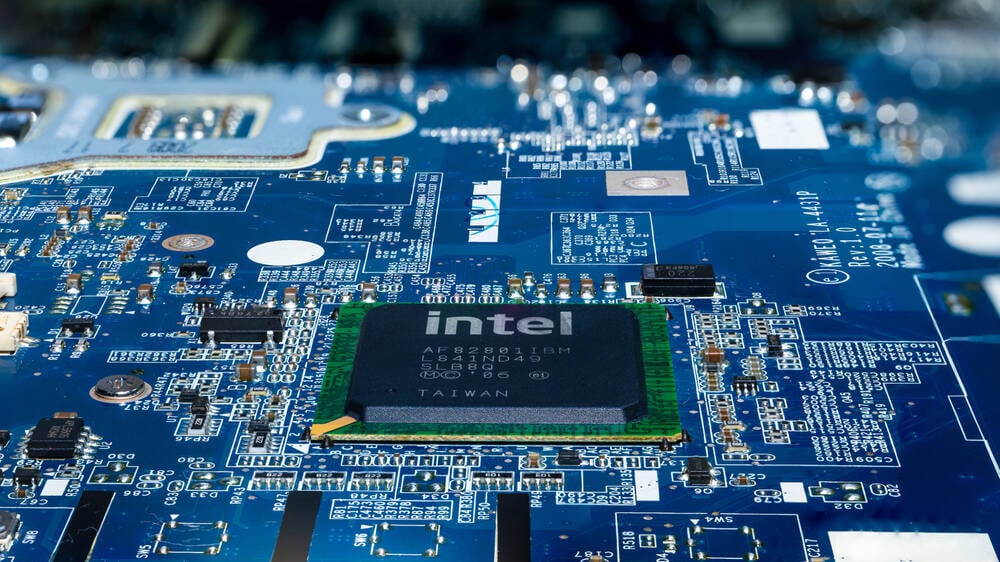Intel Delays Ohio Fab Build, Blames Semiconductor Slowdown

Intel has seemingly postponed the completion date of its planned Ohio manufacturing site to late 2026, blaming the current weakness of the semiconductor market and delays in receiving CHIPS Act subsidy cash.
The Santa Clara chipmaker announced two years ago that it was investing more than $20 billion in the creation of two semiconductor fabrication plants at a site near Columbus in Ohio, with a target for chip production to start sometime in 2025.
Now the company is instead slowing the pace of the build and pushing the date of completion back, citing "market challenges" and the slow rollout of government funding to help chip companies build up manufacturing capacity on US soil, according to the Wall Street Journal.
Those market challenges include the bumpy ride the semiconductor industry has endured for the past year or so, plus Intel's recent forecast of a double-digit decline in its Datacenter and AI (DCIA) division for this quarter as buyers look to GPUs to accelerate generative AI workloads rather than CPUs.
Intel insisted to The Register that despite the later date for production to finish, the company has not made any recent changes to its timelines.
"While we will not meet the aggressive 2025 production goal that we anticipated when we first announced the selection of Ohio in January 2022, construction has been underway since breaking ground in late 2022 and we have not made any recent changes to our pace of construction or anticipated timelines," a spokesperson told us.
"We remain fully committed to the project and are continuing to make progress on the construction of the factory and supporting facilities this year," the spokesperson added, saying that the pace of Intel's expansion in Ohio may depend on various conditions, and that typical construction timelines for semiconductor manufacturing facilities are 3-5 years from breaking ground.
This isn't the first time that Intel has reportedly expressed unhappiness at the slow progress on CHIPS Act funding to revitalize the semiconductor industry in America.
In the middle of 2022, Intel CEO Pat Gelsinger complained about US Congress taking too long to approve the necessary legislation, warning that Intel would prioritize building factories in Europe if the funding wasn't forthcoming.
Intel also huffily delayed its breaking ground ceremony for the Ohio site as a way of expressing displeasure to Congress, with some in the media reporting at the time that the start of construction itself had been delayed.
It isn't the only company eager for the cash: memory chipmaker Micron advised investors last year that federal grants and other tax incentives would be absolutely necessary for the successful development of the chip fabs it had announced in Idaho and New York.
Gelsinger also declared last year that Intel should benefit more from the government handouts than other companies building local chip plants, because he claimed his company conducts its R&D in the US as well.
Yet Intel and Micron may not have much longer to wait. A recent report claimed that the Biden administration intends to start loosening the purse strings on the $53 billion budget ahead of the State of the Union speech set for March 7.
- Intel warns of Q1 nosedive... and its shares follow suit
- Apple's on-device gen AI for the iPhone should surprise no-one. The way it does it might
- Intel and VCs form Articul8 to push chip giant's AI kit and IP
- Asia beat US, EU in chip building because the West didn't invest, Intel CEO claims
For Intel, this could mean eventually getting as much as $17.5 billion in subsidies and loans to help fund its US fabrication facilities, though the money is likely to be released in stages as the projects progress.
Late last year, it was announced that BAE Systems was among the first beneficiaries of CHIPS Act funding, getting $35 million to modernize its Microelectronics Center which is understood to produce several "mature-node" chips used for US military applications, including in the F-35 fighter jet. ®
From Chip War To Cloud War: The Next Frontier In Global Tech Competition
The global chip war, characterized by intense competition among nations and corporations for supremacy in semiconductor ... Read more
The High Stakes Of Tech Regulation: Security Risks And Market Dynamics
The influence of tech giants in the global economy continues to grow, raising crucial questions about how to balance sec... Read more
The Tyranny Of Instagram Interiors: Why It's Time To Break Free From Algorithm-Driven Aesthetics
Instagram has become a dominant force in shaping interior design trends, offering a seemingly endless stream of inspirat... Read more
The Data Crunch In AI: Strategies For Sustainability
Exploring solutions to the imminent exhaustion of internet data for AI training.As the artificial intelligence (AI) indu... Read more
Google Abandons Four-Year Effort To Remove Cookies From Chrome Browser
After four years of dedicated effort, Google has decided to abandon its plan to remove third-party cookies from its Chro... Read more
LinkedIn Embraces AI And Gamification To Drive User Engagement And Revenue
In an effort to tackle slowing revenue growth and enhance user engagement, LinkedIn is turning to artificial intelligenc... Read more

